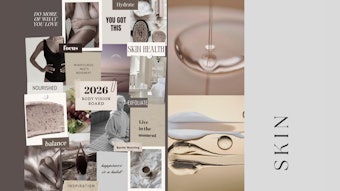
The natural look trend, according to Datamonitor Consumer, is here to stay, and that means the beauty industry needs to figure out how to enhance the “imperfect” beauty of every person rather than unify everyone under the same standard.
Examples of the high influence of natural looks can be found in the recent campaign from the fashion brand Desigual starring a model with vitiligo, or in the release of Cindy Crawford’s unretouched photos for Marie Claire magazine that showed her body's "flaws." This went viral, sparking thousands of positive comments for once showing a model without Photoshopping.
Reacting to the disproportionate presence of “artificial looks” with hair extensions, false eyelashes and extreme anti-aging treatments, consumers now want to be proud of their imperfections. Datamonitor Consumer has shown that 45% of consumers want their looks to reflect their age, and 55% believe that images of beauty showed on advertising are unrealistic. Consumers are tired of unachievable beauty models that are so ideal they are impossible to reach by regular consumers. Because shoppers feel they are not represented by the current standards of beauty, the logical step is toward something real.
The concept of “real beauty,” identified as looks without makeup or showing natural imperfections, is likely motivated by a feeling of nostalgia where consumers perceive values from the past—when their grandmothers were not afraid of showing their wrinkles—as the right thing, far from over-Photoshopped and unrealistic models. To this, it must be noted consumers’ lack of time for time-consuming beauty treatments and the idea of being different from the crowd as a representation of a strong personality play a role in the trend.
Beauty companies can capitalize on this idea. Dove was one of the first brands that capitalized on the value of “real beauty” by showing normal bodies in its advertisements. Now it is strengthening its positioning with a new campaign, where the company advocates for the beauty of natural curly hair, designed in relation to the launch of its new Advanced Hair Series Quench Absolute line of products.
Hair care, in fact, is one of the segments that can benefit from this natural approach; in regions like Europe the expected overall growth for the hair care market is only 9% 2014–18, much less than the 14% expected for the skin care market for the same time period. This “natural looks” approach can encourage companies to energize their offer and thus, invigorate the market.
What can we expect in the future? Surely we will see more derivations from this idea from consumers proud of frizzy hair styles to “no nail polish” looks. Natural looks can even involve the male audience in the cosmetics market in a way that they can feel comfortable even with makeup.










